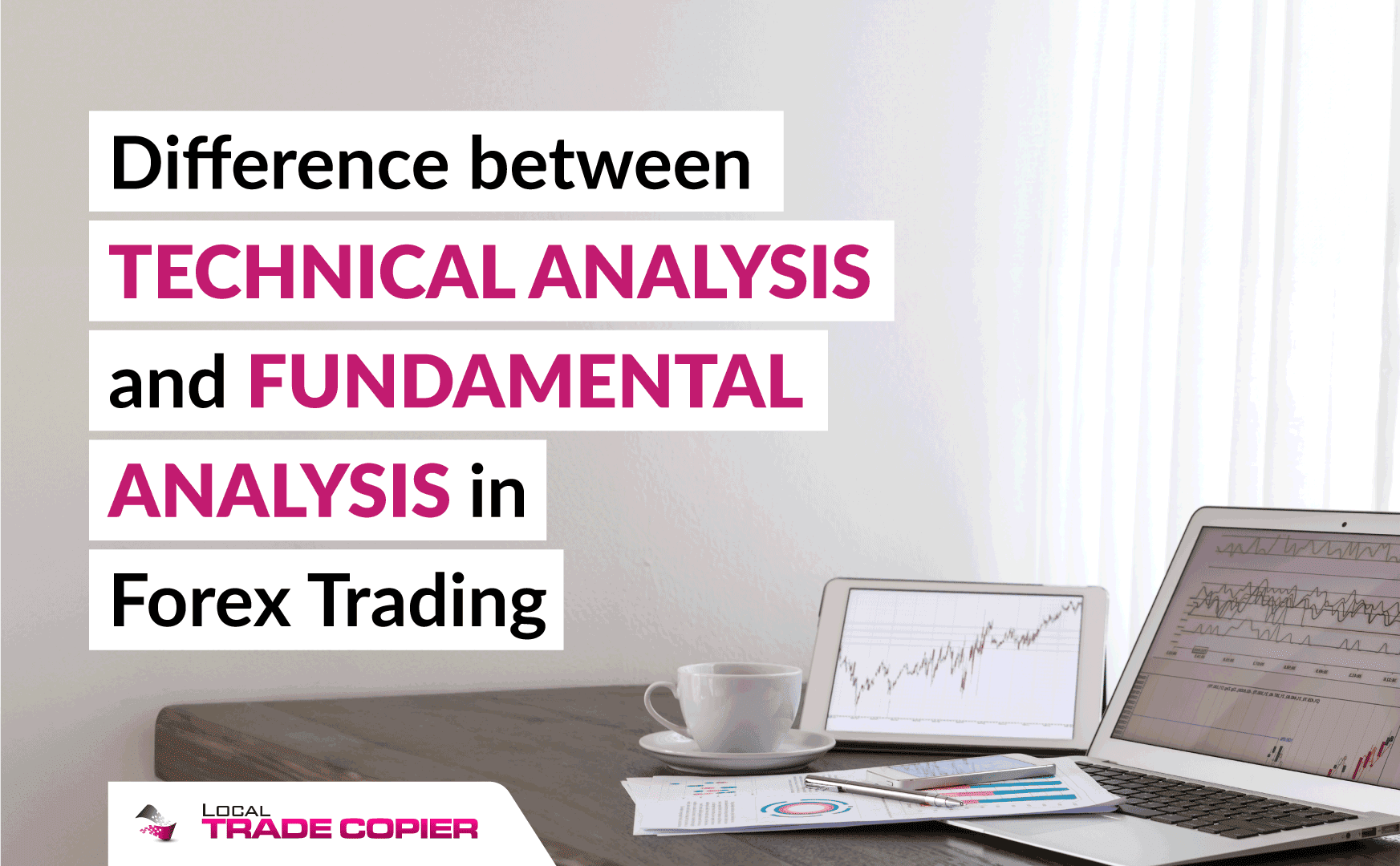
Mastering FX Trading: Distinguishing Technical From Fundamental Analysis Techniques on MetaTrader 4

Mastering FX Trading: Distinguishing Technical From Fundamental Analysis Techniques on MetaTrader 4

When it comes to the intricate world of Forex trading , every decision counts. Traders face a constant challenge: how to predict the movement of currency pairs accurately? In pursuit of this knowledge, two fundamental approaches have emerged: Technical Analysis and Fundamental Analysis. Each methodology has its strengths and weaknesses, and understanding the distinctions between them is crucial for success in the Forex market.
Table of Contents
- Understanding Technical Analysis
- Understanding Fundamental Analysis
- Contrasting the Two Approaches
- Crafting Informed Decisions
- The Synergy of Both Worlds
- Conclusion
- FAQ’s
- 1. Can I use both Technical and Fundamental Analysis together?
- 2. Which analysis method is better for short-term trading?
- 3. How can I stay updated on economic indicators for Fundamental Analysis?
- 4. Do I need to be an economist to use Fundamental Analysis?
- 5. Are there any automated tools for Technical Analysis?
- Related posts:
Disclaimer: This post includes affiliate links
If you click on a link and make a purchase, I may receive a commission at no extra cost to you.
Understanding Technical Analysis
Technical Analysis is akin to deciphering the language of price charts. It hinges on the notion that historical price movements often repeat themselves and that these patterns can be used to predict future price directions.
1. Price Patterns
One of the pillars of Technical Analysis is the study of price patterns . Traders scrutinize charts for recurring formations such as triangles, head and shoulders, and flags. These patterns, they believe, can provide insights into the potential future movements of currency pairs.
2. Technical Indicators
Technical analysts rely heavily on a multitude of technical indicators. These indicators include Moving Averages , Relative Strength Index (RSI), and Stochastic Oscillator . They help traders gauge market momentum and potential trend reversals.
3. Support and Resistance
In the world of Technical Analysis, the concepts of support and resistance are paramount. Support levels represent price points at which a currency pair tends to find buying interest, while resistance levels indicate where selling pressure typically mounts. Identifying these levels can be invaluable for setting entry and exit points.
4. Timeframes
Technical Analysis is versatile when it comes to timeframes . Whether you’re a short-term trader looking at minute charts or a long-term investor examining weekly charts, this approach adapts to your specific trading goals.
Understanding Fundamental Analysis
Fundamental Analysis , on the other hand, delves deep into the economic and financial factors that influence currency values. It’s the study of a nation’s economic health, political stability, and the global economic landscape.
1. Economic Indicators
Fundamental analysts keep a close eye on a country’s economic indicators . These include GDP growth, inflation rates, and employment figures. These statistics provide insights into the overall economic health of a nation and can significantly impact its currency’s value.
2. Interest Rates
Central banks’ decisions regarding interest rates play a pivotal role in the world of Forex trading. Higher interest rates can attract foreign capital and consequently strengthen a country’s currency, while lower rates can lead to depreciation.
3. Political Stability
Political events , elections, and geopolitical tensions can exert a profound influence on a nation’s currency. Generally, a stable political environment fosters a stronger currency, while uncertainty can weaken it.
4. Market Sentiment
Incorporating market sentiment into the analysis is another critical aspect of Fundamental Analysis. Positive news and sentiments can boost a currency’s value, while negative events or perceptions can lead to depreciation.
Contrasting the Two Approaches
Now that we’ve dissected the core principles of Technical and Fundamental Analysis, let’s delve into their differences:
1. Data Sources
- Technical Analysis relies on historical price and volume data.
- Fundamental Analysis uses economic, financial, and political data.
2. Focus
- Technical Analysis homes in on price patterns and technical indicators.
- Fundamental Analysis takes a broader view, considering macroeconomic factors and market sentiment.
3. Time Horizon
- Technical Analysis can be applied to both short-term and long-term trading.
- Fundamental Analysis often influences long-term investment decisions.
4. Predictive Methods
- Technical Analysis predicts future price movements based on historical patterns.
- Fundamental Analysis forecasts currency movements based on economic and political events.
Crafting Informed Decisions
So, which approach should you choose in your Forex trading journey? The decision often depends on your trading style, goals, and personal preferences.
Technical Analysis is favored by those who revel in the precision of chart patterns and technical indicators. It’s particularly useful for short-term traders looking to make quick decisions based on price movements.
Fundamental Analysis, on the other hand, appeals to traders who want a more holistic view of the market. It’s the preferred choice for long-term investors who want to align their positions with a country’s economic outlook and geopolitical landscape.
The Synergy of Both Worlds
It’s essential to recognize that these two approaches need not be mutually exclusive. Many seasoned traders combine elements of both Technical and Fundamental Analysis to gain a more comprehensive understanding of the market.
For example, you could employ Technical Analysis to pinpoint precise entry and exit points while relying on Fundamental Analysis to provide context. This fusion of methods allows traders to make well-rounded decisions that consider both the immediate price dynamics and the broader economic and political climate.
Conclusion
In the Forex trading arena, the choice between Technical and Fundamental Analysis ultimately comes down to your unique trading style, objectives, and time horizon. Both approaches offer valuable insights, and there is no one-size-fits-all answer.
By embracing the differences between Technical and Fundamental Analysis, you can develop a well-rounded strategy that aligns with your trading goals. Remember, it’s not about choosing one over the other; it’s about leveraging both to your advantage.
So, as you embark on your Forex trading journey, take the time to explore both these methodologies. As you gain experience, you’ll discover how to blend them seamlessly, making more informed decisions and increasing your chances of success in the dynamic world of Forex.
FAQ’s
1. Can I use both Technical and Fundamental Analysis together?
Ans. Absolutely. Many traders find success by integrating elements of both approaches into their trading strategies.
2. Which analysis method is better for short-term trading?
Ans. For short-term trading, Technical Analysis is often preferred due to its focus on price patterns and technical indicators.
3. How can I stay updated on economic indicators for Fundamental Analysis?
Ans. To stay informed about relevant economic data, you can follow financial news websites, access government reports, and consult economic calendars.
4. Do I need to be an economist to use Fundamental Analysis?
Ans. While a deep understanding of economics can be beneficial, traders can use Fundamental Analysis effectively by learning to interpret key economic indicators and staying informed about relevant news events.
5. Are there any automated tools for Technical Analysis?
Ans. Yes, numerous software and trading platforms offer automated Technical Analysis tools to assist traders in their decision-making processes.
Related posts:
- The Importance of Fundamental Analysis in Forex Trading
- How to Manage Risks with the Consumer Price Index (CPI) in Forex Trading
- 10 Forex Trading Strategies Based on Economic Indicators
- What is Forex Trading and How Does It Work?
Also read:
- [New] Making Your Mark on Facebook's Algorithmic Landscape
- [New] Pro Photography on iPhone Essential Apps Compilation
- [Updated] Shaping Snapshots Transitioning From Auto to Smart HDR Shooting
- 2024 Approved Step-by-Step Voice Memo Creation on iOS Devices
- How to Change GPS Location on Poco X6 Pro Easily & Safely | Dr.fone
- In 2024, Crafting Artful iPhone Snaps - Master These Top 10 Design Tactics
- Leading Belgium SEO Experts & Firms: Boost Your Website's Rankings with Our Comprehhavenship
- MassMail Software Review: Efficiently Validate Multiple Email Addresses
- Unable to Locate Pages: Understanding the 'Page Cannot Be Found' Error
- Understanding Cost Per Acquisition in Digital Marketing - CPO Definitions & SEO Strategies Explained
- Understanding In-URL SEO: A Complete Guide with SEO PowerSuite
- Understanding Vertical Search: A Comprehensive Guide & Essential SEO Strategies with SEO PowerSuite
- Yamaha Steinberg Driver: Windows, Linux Support Guide
- Title: Mastering FX Trading: Distinguishing Technical From Fundamental Analysis Techniques on MetaTrader 4
- Author: Scott
- Created at : 2025-01-18 20:01:06
- Updated at : 2025-01-21 04:25:15
- Link: https://win-top.techidaily.com/mastering-fx-trading-distinguishing-technical-from-fundamental-analysis-techniques-on-metatrader-4/
- License: This work is licensed under CC BY-NC-SA 4.0.